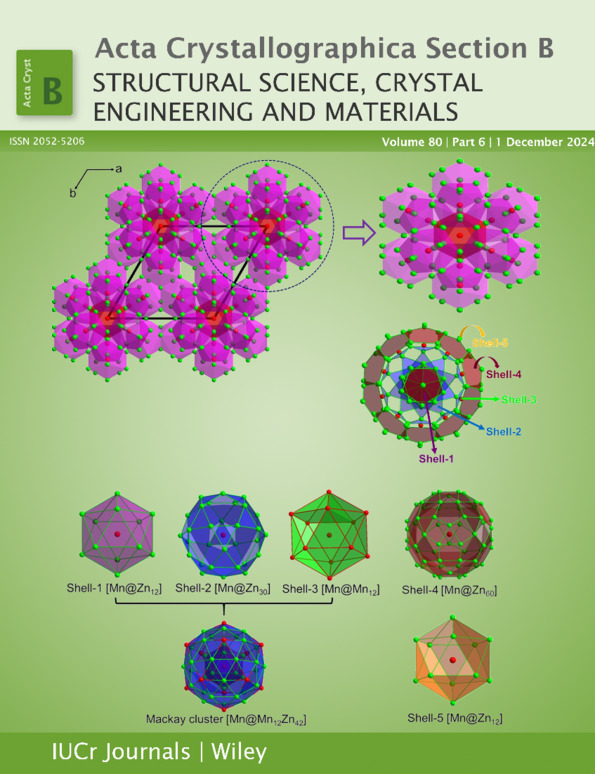Structures of hexamethyl-[1,1′-biphenyl]-4,4′-diammonium salts
Abstract
The crystal structures of nine hexamethyl-[1,1′-biphenyl]-4,4′-diammonium (HMB) salts are described: the iodide (2), triiodide (3), succinate (4), fumarate (5), tetravanadate (6), hydroterephthalate (7) and perylenetetracarboxylate (8), as well as pentamethyl-[1,1′-biphenyl]-4,4′-diammonium iodide (1) and the metal–organic framework sodium diacetylenedisalicylate–HMB (9). HMB carbonate (10) has been synthesized as an important intermediate for a promising anti-metal–organic framework (`anti-MOF'). All the described compounds are characterized by high solubility in water. The results suggest that, during crystallization, crystallohydrates are formed from water. Compounds 6 and 9 are characterized by the presence of a rigid framework; compound 6 has an open framework structure filled with water molecules. Synchronous thermal analyses of compounds 2, 4, 6, 7, 8 and 10 allowed the identification of similarities in the mechanisms of thermolysis. At about 80–180°C, the loss of crystallization water molecules occurs. Between 180 and 250°C, a methyl group (methyl cation) is split off from the quaternary ammonium salt to form tetramethylbenzidinium. In the case of the iodides and salts of organic acids, the second thermolysis product is the methyl ester of this acid (methyliodide, dimethyl carbonate), which easily evaporates. In the range 240–355°C, tetramethylbenzidinium evaporates without decomposition.




